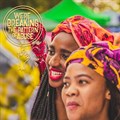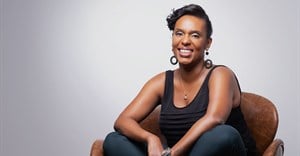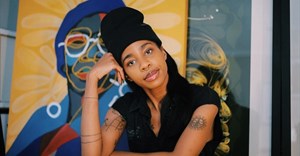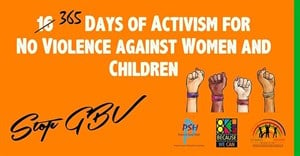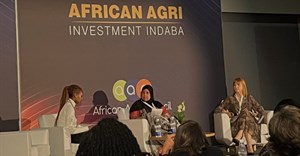Gender equality - Past, present and future
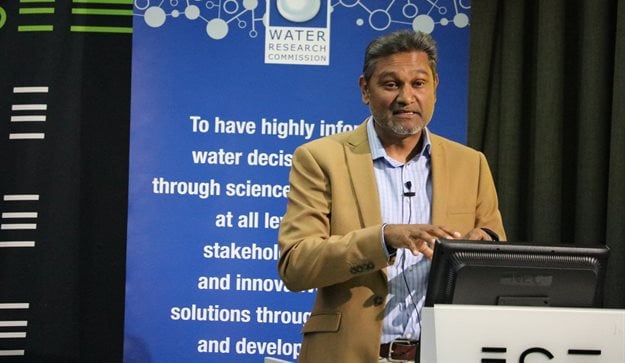
September 2020 marked the 25th anniversary of the Beijing Declaration and Platform for Action. It was a landmark achievement. Adopted by 189 countries, it is regarded as the most comprehensive global framework for the rights of women and girls. For a one-year-old democratic South Africa, it heralded a beacon of hope for a non-sexist new South Africa, having just emerged from the apartheid era characterised by racial oppression and patriarchy. Globally, it promised a turning point in the quest for gender equality.
Rollercoaster ride for gender equality
But these past 25 years have been a rollercoaster ride with few highs and too many lows for gender equality worldwide. According to UN Women executive director Phumzile Mlambo-Ngcuka, while political representation of women has doubled since 1995, men still control 75% of parliamentary seats. One billion women and girls, 15 years and older, have no basic reading and writing skills. In fact, in 2020, 31% of young women are not in education at all. Unsurprisingly, women between the ages of 25-34 are 25% more likely to live in poverty than their male counterparts. The International Planned Parenthood Federation (IPPF) statistics indicate that two thirds of the 1.4 billion people living in extreme poverty today are women.
This is further exacerbated by the fact that even for educated and capacitated women, the gender gap in labour force participation stands at 31%. And when women finally get in, you have to deal with a series of obstacles and glass ceilings. Incredibly, after you have vertically tunnelled through all of those, women will still be paid less for the same job and levels of productivity.
Bias against women
And, even more shocking, people think that this is okay in the 21st century. According to the 2020 UNDP Gender Norms Index, 90% of a combined cohort of men and women have some measure of bias against women and think that they are justified. The data from 75 countries, covering 80% of the world’s population, reveal that 50% of people think that men are better political leaders, 40% herald that men make better business executives and, alarmingly, 28% think that men are justified in beating their wives.
We have for the longest time associated gender inequality with levels of development and the poverty of nations. There were several rude awakenings to this clearly false thesis - one of the more vocal being the #MeToo movement. This visualised for the world that education, wealth and talent did not provide enough protection from gender-based violence.
A global malaise
Further indicators come from the World Economic Forum (WEF). The 2020 WEF Global Gender Gap Index ranks the wealthiest nation on Earth, the United States, at a staggeringly unexpected low 53rd ranking. 2020 also marks the 50th anniversary of the UK Equal Pay Act, and all the data indicates that this continues to be an elusive target. In fact, the World Economic Forum estimates that the gender gap, at the current rate of change, will only be closed by 2133. This is a global malaise.
It's clear that we come from a difficult past and our current statistics are far from good. What does the future hold? Across the world, we are at various stages of entry into the fourth industrial revolution (4IR). We are on the brink of a future defined by technological innovation, digitalisation, artificial intelligence, virtual reality, and big data. There are clearly great opportunities to put a sizable dent into gender inequality. Anne-Marie Imafodin, founder of STEMettes (women in science, technology, engineering, and mathematics), sees this opportunity. She offers that as virtual work becomes more dominant, many traditional barriers preventing women from certain jobs should disappear. This is also true for jobs that do not invite women in on the basis of physical strength since in a 4IR world, technological solutions should no longer require humans to be beasts of burden.
4IR workforce - males have a head-start
But it can also easily go the other way. First is the historical factor. Success in the 4IR economy will depend on IT skills, technology prowess and entrepreneurship. The 2019 EIGE (European Institute on Gender Equality) report on the 4IR points out the current gender bias in these skills domains. In Europe, women programmers and developers are 9% of this workforce and they constitute only 19% of the IT and communications labour force as a whole. Furthermore, women are only 20% of the European technology sector and comprise only 19% of the entrepreneur base. In this 4IR workforce 100m race, males already have an 80m head-start.
There are other important challenges. Artificial intelligence and big data rely heavily on historical data sets, almost all of which are biased against women and girls. It has dire consequences as some famous AI HR shortlisting tools automatically exclude women candidates to conform with the current and historical percentages of males in certain jobs. Further threats relate to direct job substitution in women-dominated industries. A 2016 UN International Labour Organization (ILO) report predicts that some Asian nations could lose 80% of their garment industries to ‘sewbots’, affecting some 9 million working women in the Association of Southeast Asian Nations (ASEAN). Manase Chiweshe from the South African Institute of International Affairs (SAIIA) makes the case that rural African women have the potential to be the most marginalised in a new digital economy. But, with the right policies, innovator strategies, good support instruments and political will at all levels, a very different future is possible.
Better plan for a better world
In this the centenary anniversary of the final ratification of the 19th Amendment giving women the right to vote in the USA, let us hope that the several nations that go to the polls in 2020 will make the courageous changes needed to take us forward in the struggle of women and the girl child. The US elections has already delivered its first woman vice-president. We have declared ourselves ready to use the opportunity of the current global crisis to emerge from it with a better plan for a better world. Let us indeed work to build back better, build forward greener and build a more gender equal society.











